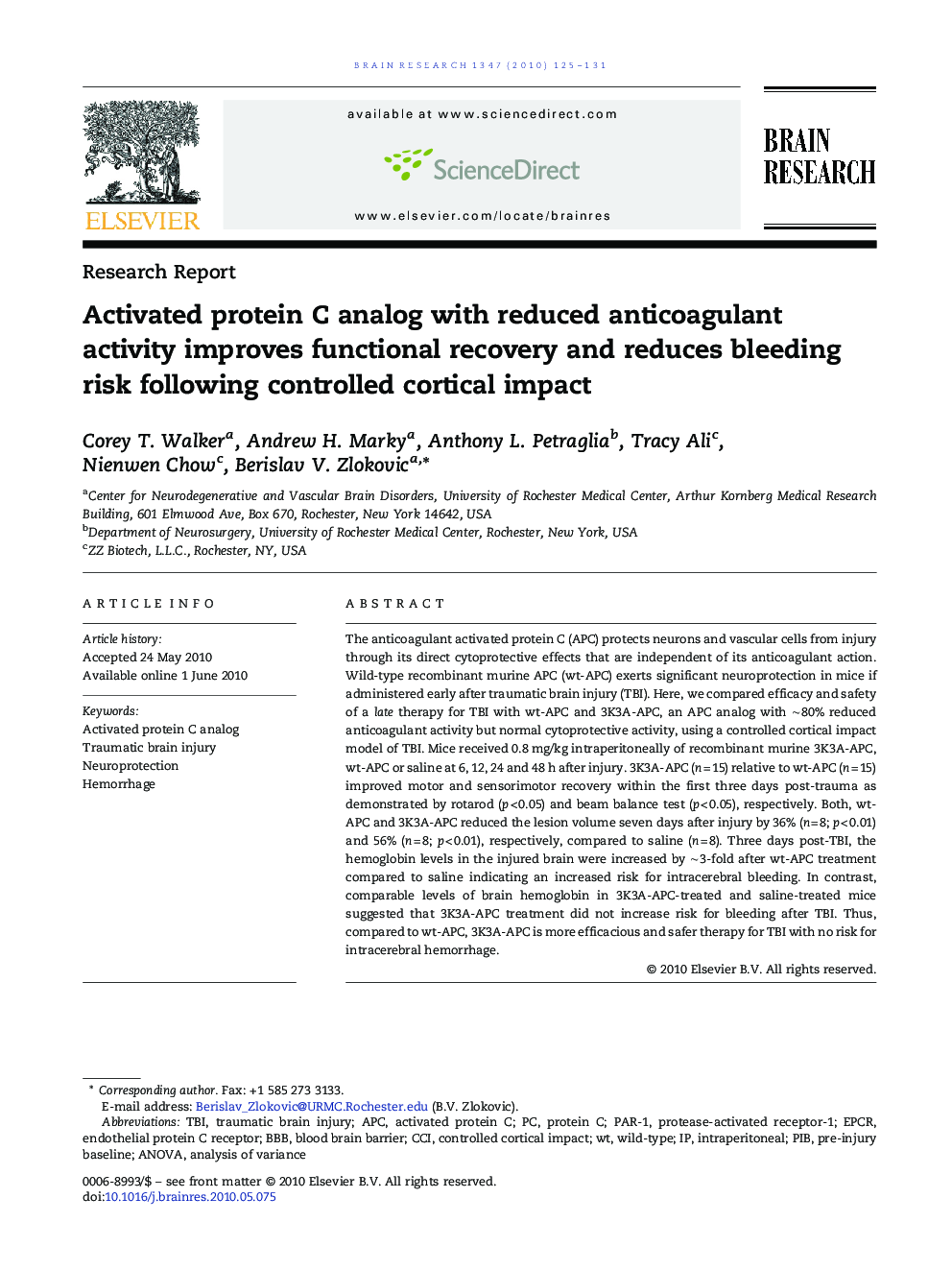| Article ID | Journal | Published Year | Pages | File Type |
|---|---|---|---|---|
| 4326776 | Brain Research | 2010 | 7 Pages |
The anticoagulant activated protein C (APC) protects neurons and vascular cells from injury through its direct cytoprotective effects that are independent of its anticoagulant action. Wild-type recombinant murine APC (wt-APC) exerts significant neuroprotection in mice if administered early after traumatic brain injury (TBI). Here, we compared efficacy and safety of a late therapy for TBI with wt-APC and 3K3A-APC, an APC analog with ∼ 80% reduced anticoagulant activity but normal cytoprotective activity, using a controlled cortical impact model of TBI. Mice received 0.8 mg/kg intraperitoneally of recombinant murine 3K3A-APC, wt-APC or saline at 6, 12, 24 and 48 h after injury. 3K3A-APC (n = 15) relative to wt-APC (n = 15) improved motor and sensorimotor recovery within the first three days post-trauma as demonstrated by rotarod (p < 0.05) and beam balance test (p < 0.05), respectively. Both, wt-APC and 3K3A-APC reduced the lesion volume seven days after injury by 36% (n = 8; p < 0.01) and 56% (n = 8; p < 0.01), respectively, compared to saline (n = 8). Three days post-TBI, the hemoglobin levels in the injured brain were increased by ∼ 3-fold after wt-APC treatment compared to saline indicating an increased risk for intracerebral bleeding. In contrast, comparable levels of brain hemoglobin in 3K3A-APC-treated and saline-treated mice suggested that 3K3A-APC treatment did not increase risk for bleeding after TBI. Thus, compared to wt-APC, 3K3A-APC is more efficacious and safer therapy for TBI with no risk for intracerebral hemorrhage.
